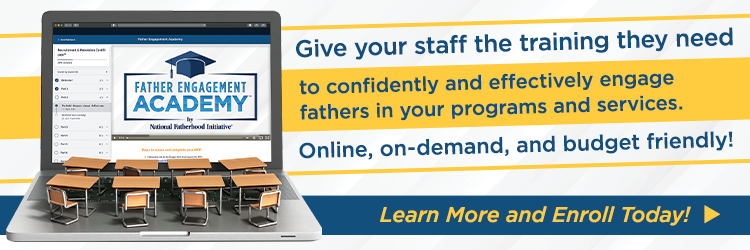
If you serve dads with child support arrears and who struggle navigating the child support system, a resource I read recently will grab your attention. But before sharing what I learned, some context.
It’s no news that many dads who owe child support struggle keeping up with their payments. One reason is the child support system in many states is stuck in the dark ages. Rather than trying to help strengthen families, they’re punitive—focused solely on collecting money from noncustodial parents, the vast majority of whom are dads. They’ve done next to nothing to help dads navigate their policies, procedures, and processes or build father-child relationships.
Fortunately, that focus is starting to change, albeit slowly. (Child support is big business, after all. As National Fatherhood Initiative® (NFI) reports in Father Facts™, child support programs collected a combined $30.5 billion in 2022.) This change is being led by states like Colorado and Texas that have piloted programs and restructured operations to build the employment, fathering, parenting, and relationship skills of dads vital to strengthening families. Moreover, the federal office that oversees the nation’s array of state child support programs changed its name recently from the Office of Child Support Enforcement to the Office of Child Support Services to reflect its emphasis on strengthening families, an emphasis it implored states to adopt even before the name change.*
But like a large ocean vessel that takes a long time to turn, this collection of individual state programs won’t change overnight. And like a dad who struggles to navigate his way around that large vessel and find the guidance, knowledge, and skill-building he needs, child support programs must find the guidance, knowledge, and skill-building they need to build an infrastructure that strengthens families.
This is where organizations like the Urban Institute play a critical role in providing states with guidance. The institute published a paper recommending the following three-point strategy:
- “Recognize that both parents have important roles in supporting their child’s well-being and development.” Empower parents to work together in deciding how best to support their children.
- “Completely end the role of child support as a mechanism to recoup child welfare costs for the government.” All of dads’ payments should go to families to benefit the children the program was created to support.
- “Apply reasonable standards to child support orders and make enhancing fathers’ capacity to play an explicit goal.” Dads should pay a reasonable sum based on their ability to pay.
The paper takes a deep dive into each point in this strategy and the changes required to implement them.
Two core changes the Urban Institute recommends caught my attention:
- Implementing co-parenting services, such as co-parenting plans and co-parenting classes.
- Reframing child support as a “family resource” program while recognizing that men want to be good dads.
NFI has resources that can help child support programs make these changes. Our print materials address co-parenting and child support head on and topics that affect the quality of co-parenting, such as communication and conflict resolution. Our Co-Parenting Curricula Bundle is a powerful combination of the evidence-based 24:7 Dad® and evidence-informed Understanding Dad™ programs. Independent research has found both programs improve co-parenting. These resources and others can help reframe child support as a source of help for families.
I encourage you to download and read the Urban Institute’s paper. Another good resource is the six strategies on designing equitable child support systems from Child Trends.
Want to know the grade for your state’s child support system? If so, check out this resource.
Does your organization use resources and programming that improves co-parenting? If you’re interested in building your organization’s co-parenting offering, let NFI know. We’re happy to help
* As a reflection of OCSS’ commitment to strengthening families, see this Notice of Proposed Rulemaking (NPRM) that will allow state child support programs to use federal funding to implement employment and training services for noncustodial parents that don’t duplicate such services states already provide. You may provide feedback on the NRPM before July 30, 2024.
